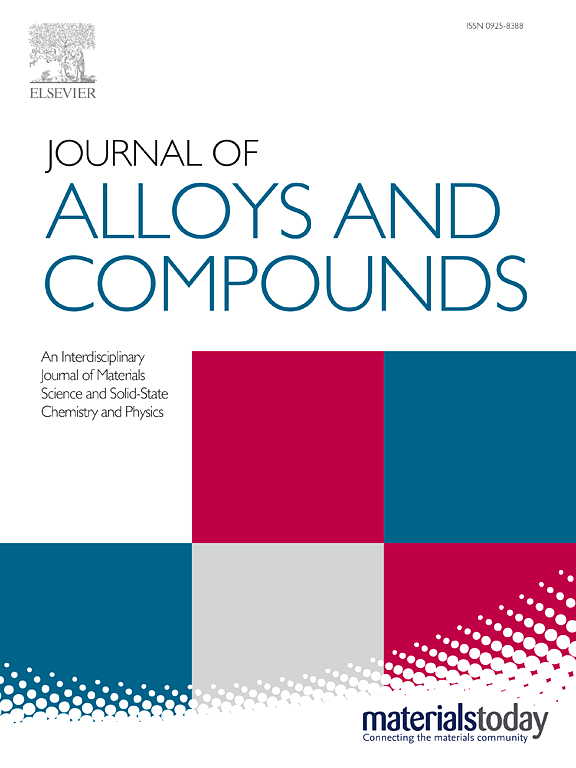Study the application of pristine and Sn metal doped B2CN3 monolayer as an anode for Cs-ion battery
IF 5.8
2区 材料科学
Q2 CHEMISTRY, PHYSICAL
引用次数: 0
Abstract
Present research employs density functional theory computations to explore effectiveness of unaltered B2CN3 and its Sn-doped variant (Sn-B2CN3) as negative electrodes for Cs-ion batteries (CsIBs). The results reveal that these systems exhibit a strong capacity for adsorbing Cs, characterized by desirable adsorption energy (Ead) values. The electron donation from Cs onto these anodes is notably significant, attributed to negative Ead of Cs+ relative to Cs. Findings indicate that Sn-B2CN3 offers optimal conditions for Cs atom migration over anode surface because of its reduced energy barrier. Through achieving the highest adsorption of Cs atoms over mentioned nanostructures, a theoretical storage capacity (TSC) of approximately 259 mAh.g-1 is estimated, surpassing that of numerous recently developed anodes. The anodes composed of these nanostructures also exhibit poor open circuit voltage (VOC). Specifically, VOC values for B3CN3 is 0.37 V and for Sn-B3CN3 is 0.61 V. Intriguing findings of present study have practical implications and can be utilized in experiments to produce advanced anode materials for manufacturing CIBs in industrial sector.研究了原始金属和锡金属掺杂B2CN3单层作为碳离子电池负极的应用
本研究采用密度泛函理论计算,探讨未改变的B2CN3及其掺杂sn的变体(Sn-B2CN3)作为碳离子电池(CsIBs)负极的有效性。结果表明,这些体系具有较强的吸附Cs能力,其特征是具有理想的吸附能(Ead)值。Cs在这些阳极上的电子捐赠是显著的,这归因于Cs+相对于Cs的负Ead。结果表明,Sn-B2CN3具有较低的能垒,为Cs原子在阳极表面的迁移提供了最佳条件。通过在上述纳米结构上实现Cs原子的最高吸附,理论存储容量(TSC)约为259 mAh。估计G-1超过许多最近开发的阳极。由这些纳米结构组成的阳极也表现出较差的开路电压(VOC)。具体来说,B3CN3的VOC值为0.37 V, Sn-B3CN3的VOC值为0.61 V。本研究的有趣发现具有实际意义,可以在实验中用于工业部门制造cib的先进阳极材料。
本文章由计算机程序翻译,如有差异,请以英文原文为准。
求助全文
约1分钟内获得全文
求助全文
来源期刊

Journal of Alloys and Compounds
工程技术-材料科学:综合
CiteScore
11.10
自引率
14.50%
发文量
5146
审稿时长
67 days
期刊介绍:
The Journal of Alloys and Compounds is intended to serve as an international medium for the publication of work on solid materials comprising compounds as well as alloys. Its great strength lies in the diversity of discipline which it encompasses, drawing together results from materials science, solid-state chemistry and physics.
 求助内容:
求助内容: 应助结果提醒方式:
应助结果提醒方式:


